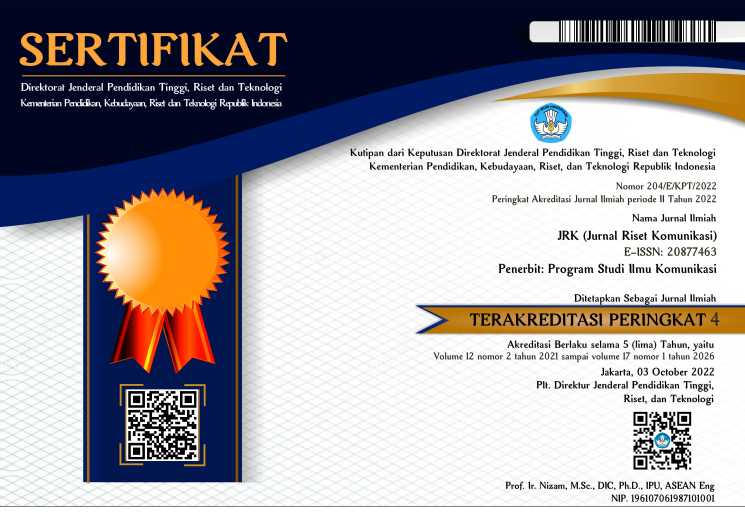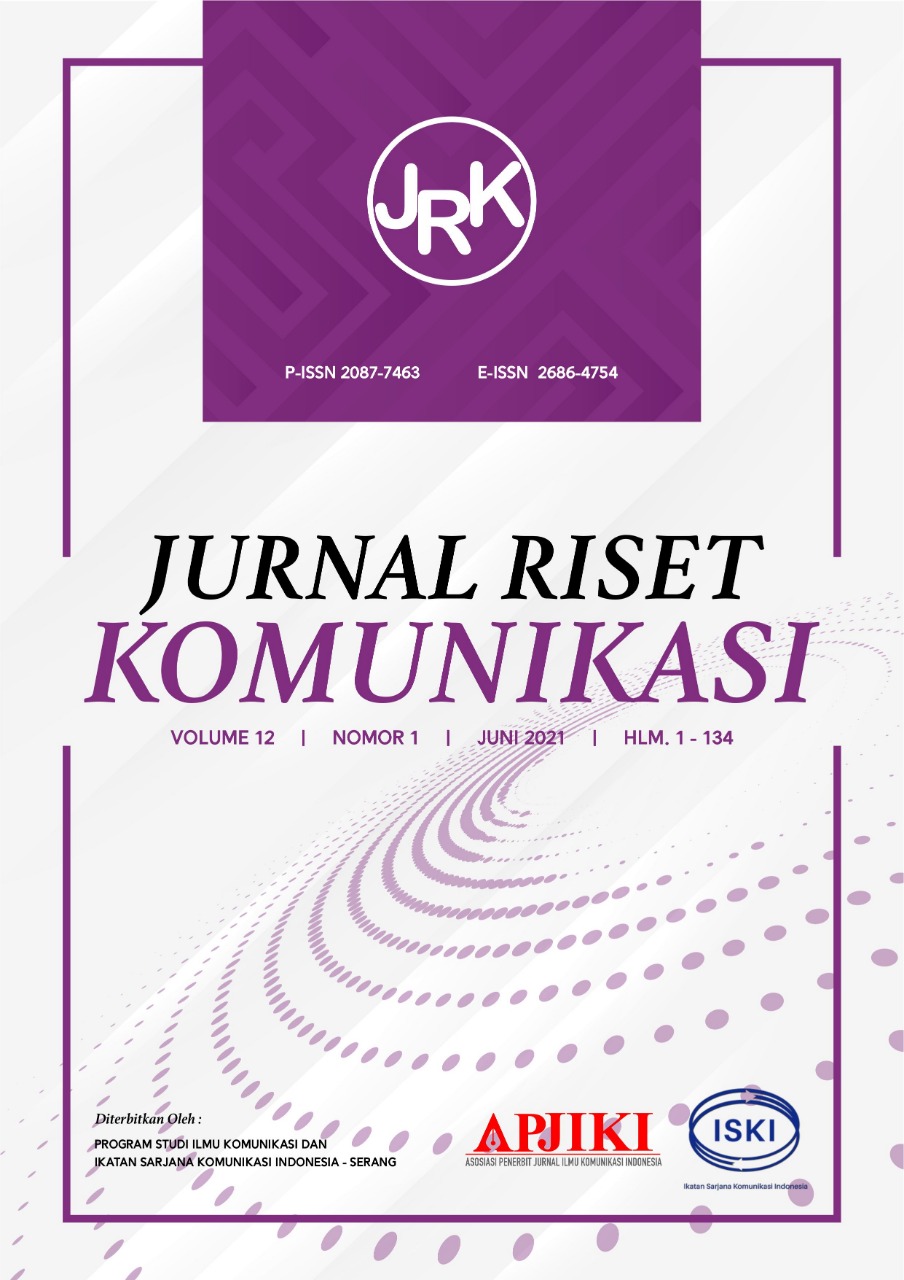Pengaruh Konvergensi Media Terhadap Kepuasan Pendengar RRI Kupang
Abstract
Penelitian ini bertujuan untuk menganalisis pengaruh konvergensi media terhadap tingkat kepuasan pendengar radio RRI Kupang. Media konvergensi mengacu pada pertemuan berbagai platform media tradisional dan digital, sementara disrupsi teknologi menggambarkan perubahan besar yang disebabkan oleh perkembangan teknologi digital, seperti layanan streaming dan aplikasi seluler. Penelitian ini menggunakan pendekatan kuantitatif dengan metode survei untuk mengumpulkan data dari 300 pendengar aktif RRI Kupang. Data dianalisis menggunakan regresi linear untuk menilai hubungan antara konvergensi media dengan kepuasan pendengar. Hasil penelitian menunjukkan bahwa konvergensi media berpengaruh signifikan terhadap tingkat kepuasan pendengar RRI Kupang. Penelitian ini memberikan rekomendasi agar penelitian lanjutan dapat menambahkan variabel lain seperti konten siaran, dan juga usia pendengar. Kepada RRI Kupang juga disarankan agar senantiasa melakukan variasi siaran agar mempertahankan loyalitas pendengar di era digital.
Full Text:
34-50 PDF (Indonesian)References
Aljabbaru, I. H., Wibowo, R. P., & Pujangkoro, S. A. (2024). The effect of customer experience in using the RRI Play Go streaming radio application on satisfaction and loyalty. Atlantis Press.
Albarran, A. B. (2013). The Media Economy. Routledge.
Andrew, A. A., & Baatartogtokh, B. (2015). How useful is the theory of disruptive innovation? MIT Sloan Management Review.
Bennett, W. L., & Segerberg, A. (2013). The logic of connective action: Digital media and the personalization of contentious politics. Cambridge University Press.
Berry, R. (2006). Will the iPod kill the radio star? Profiling podcasting as radio. Convergence, 12(2), 143–162. https://doi.org/10.1177/1354856506066522
Berry, R. (2006). The Transforming of Radio in the Digital Age. Journal of Radio Studies, 13(1), 56-70.
BPS Provinsi NTT. (n.d.). Persentase penduduk berumur 5 tahun ke atas yang mengakses internet. https://ntt.bps.go.id/indicator/2/1040/2/
Castells, M. (2009). Communication power. Oxford University Press.
Catur Nugroho, S. (2020). Cyber society: Teknologi, media baru, dan disrupsi informasi. Prenada Media.
Christensen, C. M. (1997). The Innovator’s Dilemma: When New Technologies Cause Great Firms to Fail. Harvard Business Press.
Dwyer, T. (2010). Media convergence. McGraw Hill.
Edison Research. (2018). The infinite dial 2018. Somerville, NJ. https://www.slideshare.net/
Harris, M. (2018, December 17). What is streaming music? Lifewire. https://www.lifewire.com/what-is-streaming-music-2438445
Jenkins, H. (2006). Convergence culture: Where old and new media collide. New York University Press.
Livingstone, S. (2004). The challenge of changing audiences: Or, what is the audience researcher to do in the age of the internet? European Journal of Communication, 19(1), 75–86. https://doi.org/10.1177/0267323104040695
Mariani, M. M., & Fosso Wamba, S. (2020). Exploring how consumer goods companies innovate in the digital age: The role of big data analytics companies. Journal of Business Research, 121, 294–302. https://doi.org/10.1016/j.jbusres.2020.09.023
McIntyre, H. (2018, May 25). The top 10 streaming music services by number of users. Forbes. https://www.forbes.com/sites/hughmcintyre/
McQuail, D. (2010). McQuail's mass communication theory (6th ed.). SAGE Publications.
Meikle, G., & Young, S. (2017). Media convergence: Networked digital media in everyday life. Bloomsbury Publishing.
Napoli, P. M. (2011). Audience evolution: New technologies and the transformation of media audiences. Columbia University Press.
Putra, A. M., Wardhani, D., & Buana, T. M. (2012). The reputation of communication in the dynamic of convergence. Kencana Prenada Media Group.
Rubin, M. A. (2009). Uses-and-gratifications perspective on media effects. In J. Bryant & M. B. Oliver (Eds.), Media effects: Advances in theory and research (3rd ed., pp. 165–184). Lawrence Erlbaum.
Setiawan, H., & Darmastuti, R. (2021). Strategi komunikasi radio Suara Salatiga dalam upaya mendapatkan loyalitas pendengar di era digital.
Komuniti: Jurnal Komunikasi dan Teknologi Informasi, 12(2), 55–67. https://doi.org/10.24090/komuniti.v12i2.2021.
DOI: http://dx.doi.org/10.62870/jrk.v1i1.30575
Refbacks
- There are currently no refbacks.









